20 Wildflowers That Grow in Michigan (Identification Guide With Pictures)
-

- Last updated:
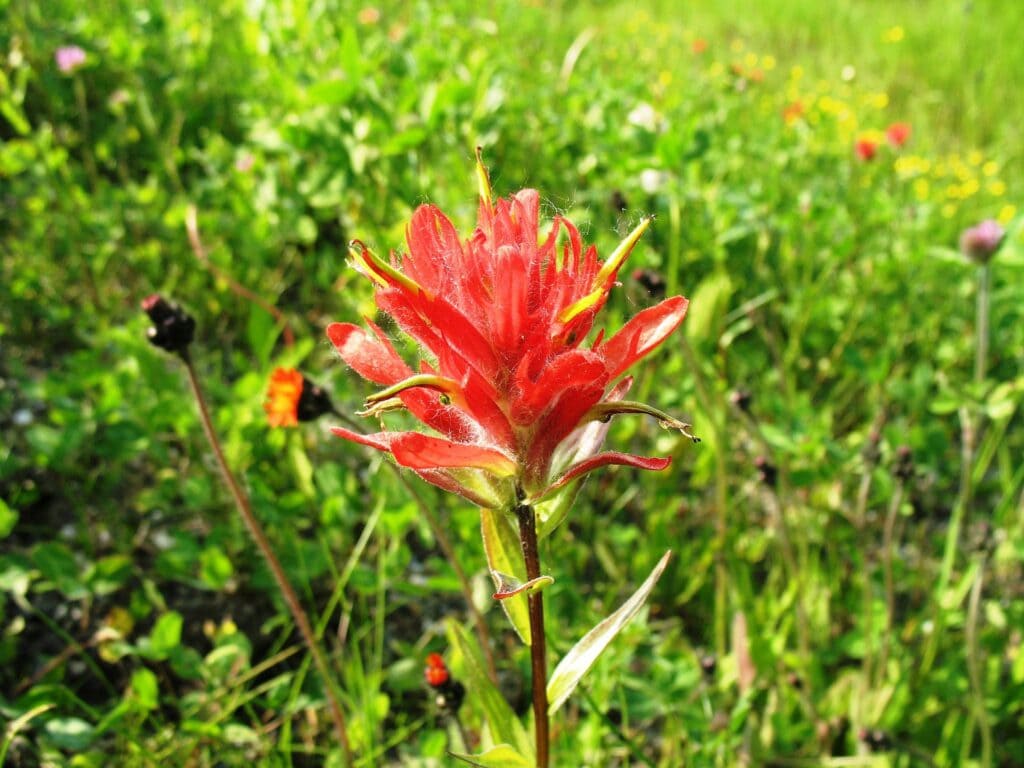
There are hundreds of wildflowers that grow in Michigan, so it’d be impossible for us to identify them all here. But with so many wildflower options in the state, it was easy to track down a few of our favorites for you!
We’ve highlighted 20 wildflowers you can find in Michigan for you here. Whether they’re invasive, native, colorful, or bland, there’s something for everyone on our list!
The 20 Wildflowers That Grow in Michigan
1. American Lotus

| Scientific Name | Nelumbo lutea |
| USDA Hardiness Zone | 4 to 11 |
| Mature Size | 3 to 6 feet |
American lotus is an aquatic wildflower, but there are plenty of waterways in Michigan for them to grow. They start growing underwater, but when they bloom, the flowers extend past the water so they’re visible above the surface.
2. Indian Paintbrush
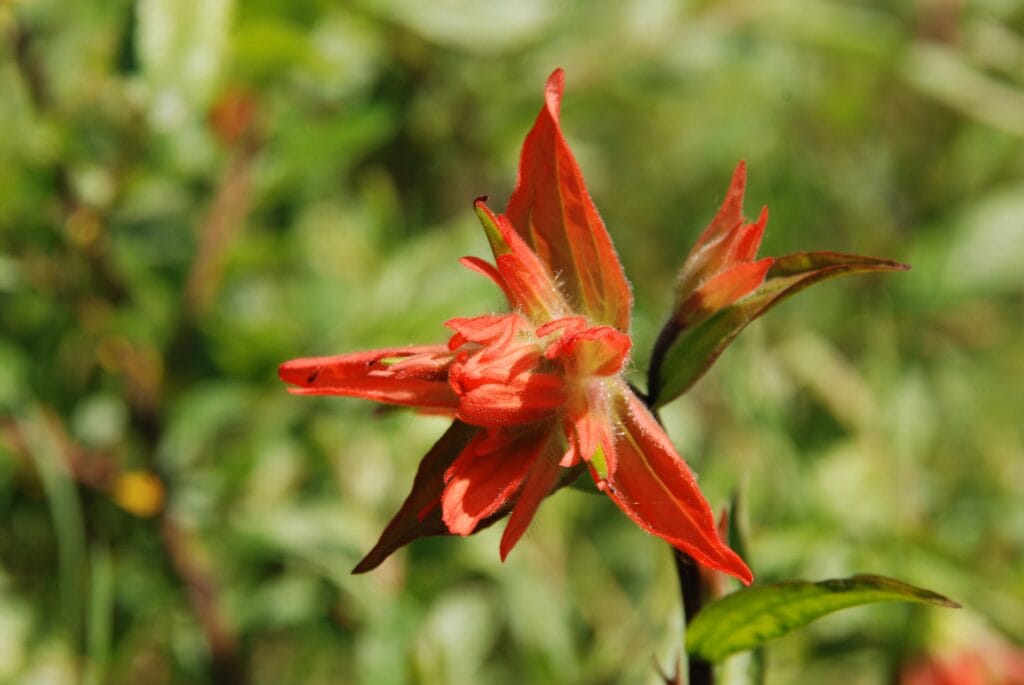
| Scientific Name | Castilleja coccinea |
| USDA Hardiness Zone | 4 to 8 |
| Mature Size | 4 to 36 inches |
The Indian paintbrush is a beautiful wildflower with bright red tips on the flowers. They bloom in the spring and need full sun to grow. They also steal nutrients from other plants, so you’re not going to find this plant on its own.
3. Puttyroot Orchid
| Scientific Name | Aplectrum hyemale |
| USDA Hardiness Zone | 4 to 8 |
| Mature Size | 3.5 to 8 inches |
Puttyroot orchid, often called the Adam and Eve plant, is a wildflower with pink, purple, and white flowers. Many people call them the Adam and Even plant because the corms on the flower typically grow in pairs.
4. Queen Anne’s Lace

| Scientific Name | Daucus carota |
| USDA Hardiness Zone | 4 to 11a |
| Mature Size | 1 to 4 feet |
Queen Anne’s Lace is an invasive wildflower species, but it’s so aggressive and easy to spread that it’s not going anywhere. It blooms from summer to fall and produces small white flowers on the end of each stalk.
5. Chicory
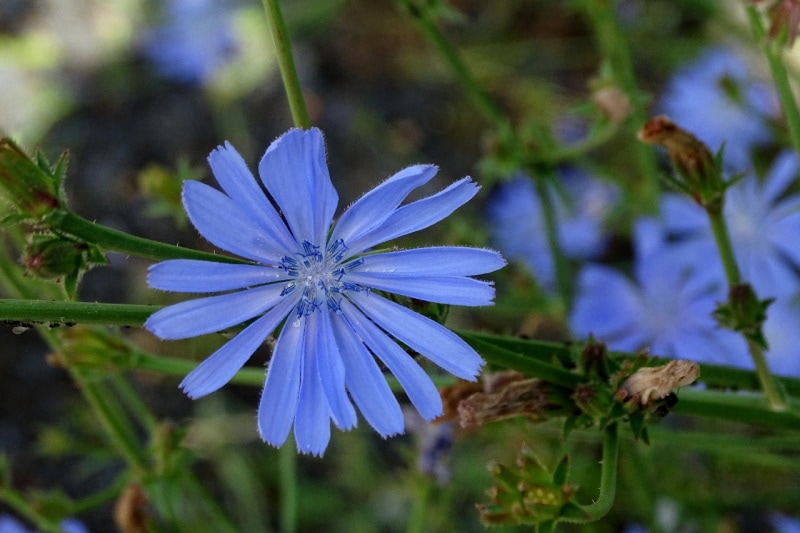
| Scientific Name | Cichorium intybus |
| USDA Hardiness Zone | 3 to 10 |
| Mature Size | 1 to 4 feet |
Chicory is a beautiful wildflower in Michigan, but unless you keep an eye out you won’t get to watch them bloom. They only bloom for one day a year, and in hotter weather, they’ll only bloom for a few hours. The flower itself is a brilliant blue and purple, though.
6. Bladderwort

| Scientific Name | Utricularia |
| USDA Hardiness Zone | 4 to 10b |
| Mature Size | 1 inch |
Bladderwort is a carnivorous plant you can find in Michigan, but if you’re looking for it, you’ll have to look closely. This plant stays exceptionally close to the ground. When insects brush up against the plant, it sucks them inside, making it one of the most unique wildflower species in the state.
7. Black-Eyed Susan

| Scientific Name | Rudbeckia hirta |
| USDA Hardiness Zone | 3 to 9 |
| Mature Size | 2 to 3 feet |
Black-eyed Susan is a common plant throughout the United States, and Michigan is no different. They come with yellow, orange, red, and brown petals, but yellow is the most common. The center of the flower gives the flower its namesake with a black “eye.”
8. Beach Pea

| Scientific Name | Lathyrus japonicus |
| USDA Hardiness Zone | 3 to 7 |
| Mature Size | 1 to 2 feet |
Beach peas are plants that grow in multiple colors from white, to purple and pink. No matter what color beach pea you stumble upon, it’s a beautiful plant with bell-style flowers that droop not long after blooming.
9. Blue Vervain

| Scientific Name | Verbena hastata |
| USDA Hardiness Zone | 3 to 9 |
| Mature Size | 2 to 5 feet |
As a drought-resistant wildflower, you can find blue vervain throughout the state regardless of the local weather. They do a great job of attracting butterflies and bees, and the purple and blue flowers are a joy to look at.
10. Blazing Star

| Scientific Name | Liatris |
| USDA Hardiness Zone | 3 to 9 |
| Mature Size | 2 to 4 feet |
Blazing star doesn’t look like many other wildflowers in Michigan. It grows in narrow spikes of bright purple flowers, and the plant is native to Michigan. You can find them growing naturally all around the state, and if you want to add a little more height to your beds, you can plant them in the garden yourself!
11. Dame’s Rocket
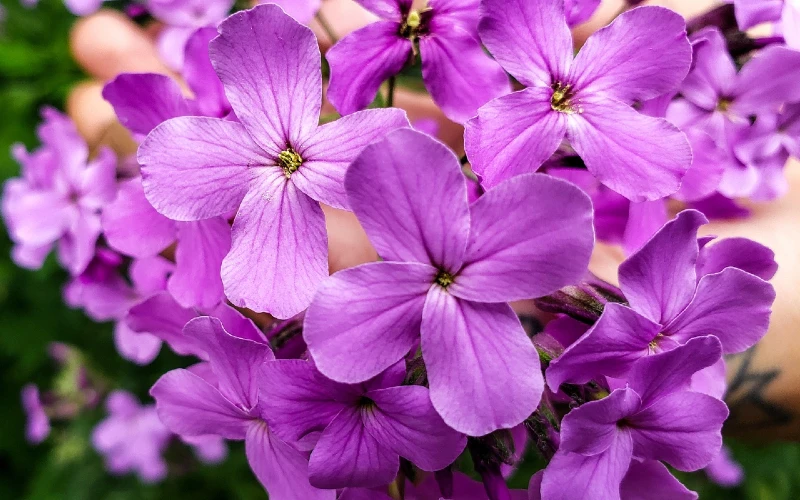
| Scientific Name | Hesperis matronalis |
| USDA Hardiness Zone | 3 to 9 |
| Mature Size | 1 to 4 feet |
Dame’s rocket spreads like crazy and you can often find them in wildflower seed mixes. They bloom in early to mid-spring, and their purple and pink flowers stand out in most fields. You can also eat the leaves, but they do have a slightly bitter taste.
12. Cardinal Flower

| Scientific Name | Lobelia cardinalis |
| USDA Hardiness Zone | 3 to 9a |
| Mature Size | 3.5 to 72 inches |
The cardinal flower is a wildflower that does a great job of attracting hummingbirds. They have a bright red appearance that draws them in, and the long tubular flowers make it difficult for other types of birds to reach the nectar.
13. Common Blue Violet
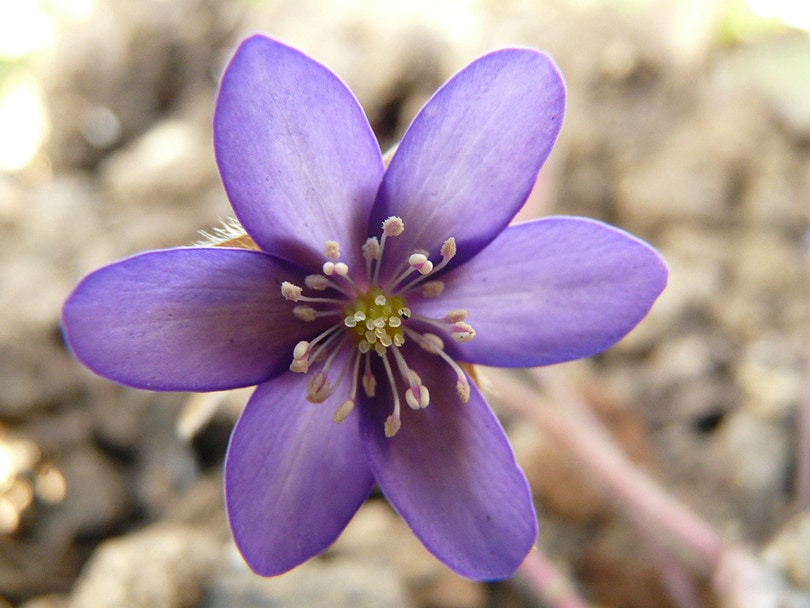
| Scientific Name | Viola sororia |
| USDA Hardiness Zone | 3 to 10 |
| Mature Size | 6 to 10 inches |
Common blue violets can start cropping up anywhere and if it does begin to grow it’ll attract all sorts of wildlife. The flowers themselves don’t get very high, and the flowers are a beautiful combination of blue and purple.
14. Bloodroot
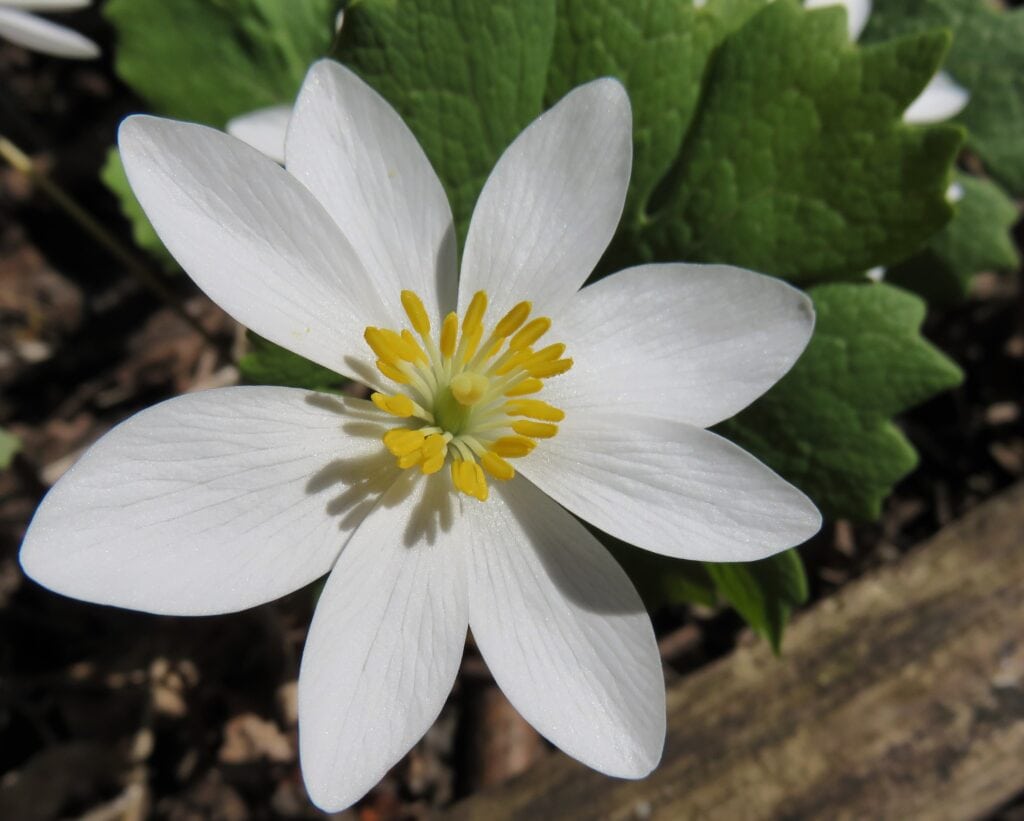
| Scientific Name | Sanguinaria |
| USDA Hardiness Zone | 3 to 8 |
| Mature Size | 8 to 20 inches |
One look at bloodroot and you can’t quite figure out how it got its name. The petals on the flower are bright white with a yellow center. Instead, the bloodroot gets its name from the red-orange sap you can find in the stems.
15. Purple Coneflower

| Scientific Name | Echinacea purpurea |
| USDA Hardiness Zone | 2a to 10b |
| Mature Size | 2 to 3 feet |
If you don’t have a green thumb but want to add a touch of color to your garden, purple coneflower is a great choice. It’s easy to grow and is drought resistant. Just be ready for rabbits and other similar animals to come and try and snack on the flowers.
16. Daisy Fleabane
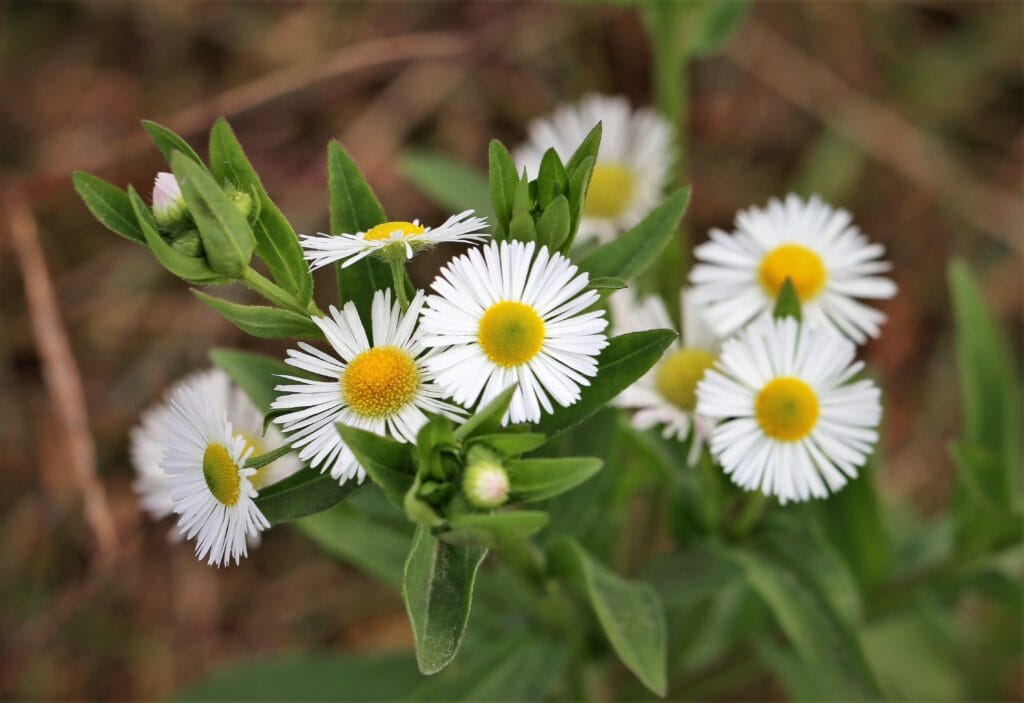
| Scientific Name | Erigeron annuus |
| USDA Hardiness Zone | 2 to 8a |
| Mature Size | 4 to 24 inches |
Daisy fleabane might not be the most striking wildflower in Michigan, but you can find these small white flowers all over the place. They attract beets, butterflies, and even hummingbirds, making them a valuable addition to gardens.
17. Common Periwinkle

| Scientific Name | Vinca minor |
| USDA Hardiness Zone | 4 to 9 |
| Mature Size | 4 to 6 inches |
Common periwinkle is a common groundcover plant that quickly and easily spreads into different environments. It’s extremely invasive, and the vines spread extremely fast. They produce small purple flowers, but they’ll also drive out many other native plants.
18. Prairie Smoke

| Scientific Name | Geum triflorum |
| USDA Hardiness Zone | 3 to 7 |
| Mature Size | 10 inches |
You can’t find prairie smoke everywhere in Michigan, but if you visit the sandy prairies, oak savannas, or the bluff savannas, you can still track this wildflower down. But overall, it’s going to take some work to find prairie smoke since it’s a state-threatened plant in Michigan.
19. Fringed Orchid
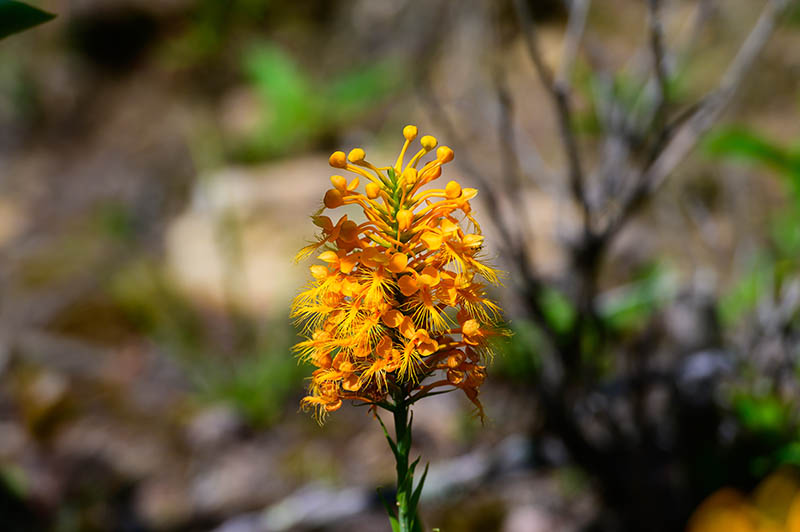
| Scientific Name | Platanthera |
| USDA Hardiness Zone | 4 to 10 |
| Mature Size | 2 to 4 feet |
The fringed orchid is another threatened plant species you can find in Michigan if you know where to look. You can find them in wetlands, marches, and bogs, especially in northern Michigan. They have white blooms, but they only bloom for about a week each year.
20. Dragon’s Mouth

| Scientific Name | Arethusa bulbosa |
| USDA Hardiness Zone | 3 to 7 |
| Mature Size | 6 to 10 inches |
Dragon’s mouth is an extremely unique-looking wildflower you can find in Michigan. It has bright purple petals with flecks of yellow and white. While it doesn’t grow very high if you see it growing, you’re bound to take a second look.
Conclusion
With so many wildflowers in Michigan, there’s always something new for you to see. Whether you’re looking to add some to your garden or identify what’s out there, there are tons of wildflowers in Michigan.
So, the next time you’re out, take a step back and enjoy the view. Chances are there are more than a few wildflowers adding a bit of color and flair to the landscape!
Related Read:
- 10 Wildflowers That Grow in Washington, D.C. (Identification Guide With Pictures)
- How to Grow Wildflowers From Seeds: Step-By-Step Guide
- https://www.nature.org/en-us/about-us/where-we-work/united-states/michigan/stories-in-michigan/wildflowers-where-when-to-view/
- https://mymichiganbeach.com/michigan-wildflowers/
- https://uswildflowers.com/wfquery.php?State=MI
- https://www.mlive.com/travel/2016/08/the_most_beautiful_wildflowers.html
- https://birdwatchinghq.com/wildflowers-in-michigan/
Featured Image Credit: Pixabay
Contents

